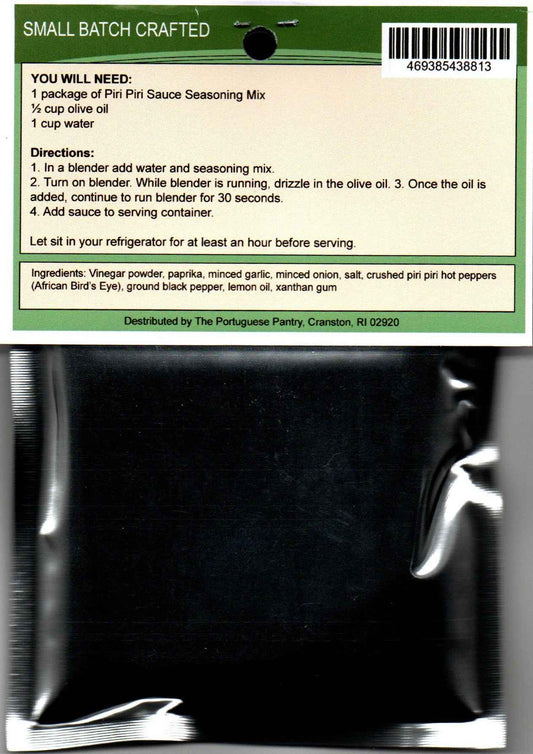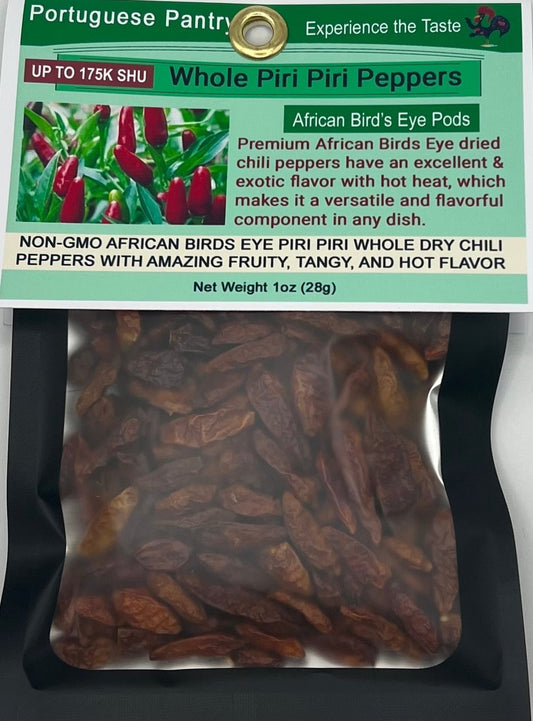Collection: Piri Piri Pepper Blends
What makes Portuguese piri piri chili peppers so special?
In the late 1400s and on into the 1500s, pioneering Portuguese explorers and merchants began introducing South America’s chilies to far-flung places. First, to Africa. And then further afield to India, Asia, and China.
This is not a brash, big chili that’s all about macho heat. The pipr piri pepper is far more subtle. It has a rich, smoked undertow of something like char-baked peaches that lingers quietly alongside its long burn. And it’s got plenty of that. Its 100,000 - 225,000 Scoville heat units.
This blend of flavors and extra-spiciness is what makes the piri piri pepper such a great culinary pepper. It's a fine basting sauce for meats and vegetables as they cook. It’s grand in a tomato and onion salsa. It also dries well. That means it’s ideal as a foundational powder for a pre-cooking dry rub, as well as being an arrestingly fiery, sprinkled condiment.
It’s all these qualities that make the piri piri pepper especially relished in the bottled chili sauces that are particularly loved in Angola, Namibia, Mozambique, and South Africa.

They also grow wild across Africa – especially when their seeds are dispersed far and wide in the droppings of chili-eating birds. And they are commercially farmed. Piri Piri peppers are a welcome cash-crop for small-holding farmers in Angola, Ghana, Kenya, Malawi, Mozambique, South Africa, Uganda, Zambia, and Zimbabwe.
-
Torresmos Portuguese Azorean Pork Marinate Mix
5.0 / 5.0
(2) 2 total reviews
Regular price $6.00 USDRegular price -
Chicken Mozambique Seasoning
5.0 / 5.0
(3) 3 total reviews
Regular price $6.00 USDRegular price -
Sloppy Joe Seasoning Mix and Dynamite Torpedo Meat Recipe
5.0 / 5.0
(3) 3 total reviews
Regular price $6.00 USDRegular price -
Azorean Style Spicy Savory Seafood Sauce Seasoning Mix
Regular price $6.00 USDRegular price -
Portuguese Spicy Piri Piri Special Blend All Purpose Seasoning Mix
5.0 / 5.0
(1) 1 total reviews
Regular price $6.00 USDRegular price -
Piri Piri Pulled Pork Seasoning
5.0 / 5.0
(1) 1 total reviews
Regular price $6.00 USDRegular price -
Piri Piri Chili Seasoning Mix
Regular price $6.00 USDRegular price -
Portuguese Chouriço Sausage Patty Seasoning Mix
5.0 / 5.0
(1) 1 total reviews
Regular price $6.00 USDRegular price -
Piri Piri Spicy Faial Sauce Seasoning Mix
5.0 / 5.0
(1) 1 total reviews
Regular price $6.00 USDRegular price -
Piri Piri Blackened Seasoning
5.0 / 5.0
(1) 1 total reviews
Regular price $6.00 USDRegular price -
Piri Piri Sauce Seasoning Mix
5.0 / 5.0
(2) 2 total reviews
Regular price $6.00 USDRegular price -
Whole Dried African Bird's Eye Chili Peppers Piri Piri Peri Peri
5.0 / 5.0
(2) 2 total reviews
Regular price $6.00 USDRegular price -
Maple Piri Piri Onion Dip Mix
Regular price $6.00 USDRegular price -
Piri Piri Barbecue Sauce Piri Piri Chicken BBQ Seasoning Mix
5.0 / 5.0
(3) 3 total reviews
Regular price $6.00 USDRegular price -
Corisca Hot Crushed Peppers (Pimenta Moída) – 16 oz Authentic Portuguese Spicy Red Pepper
Regular price $10.00 USDRegular price






























